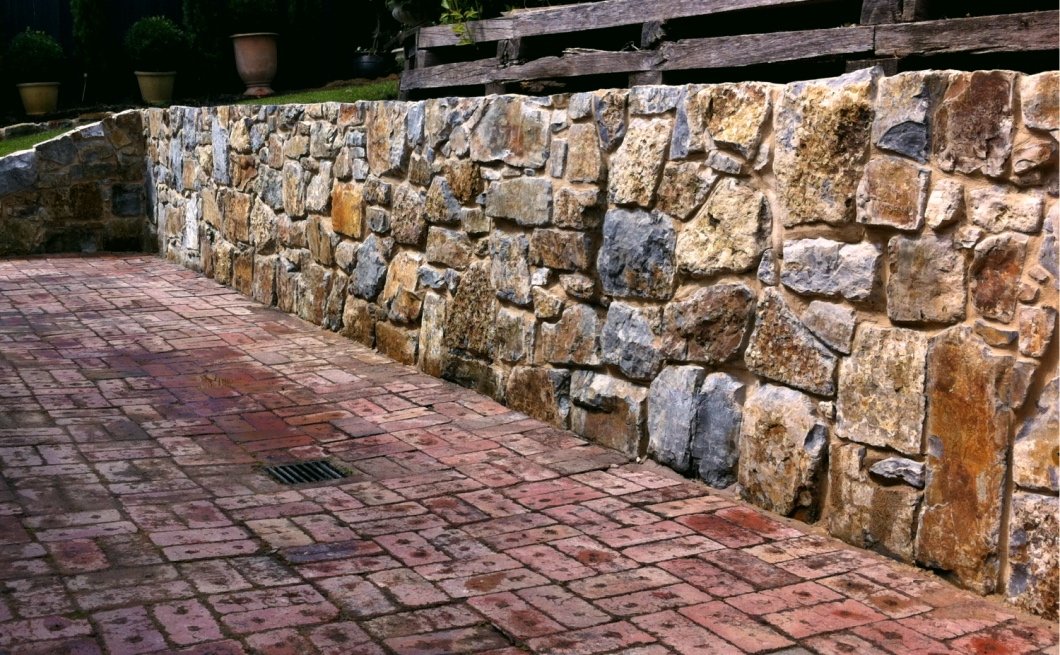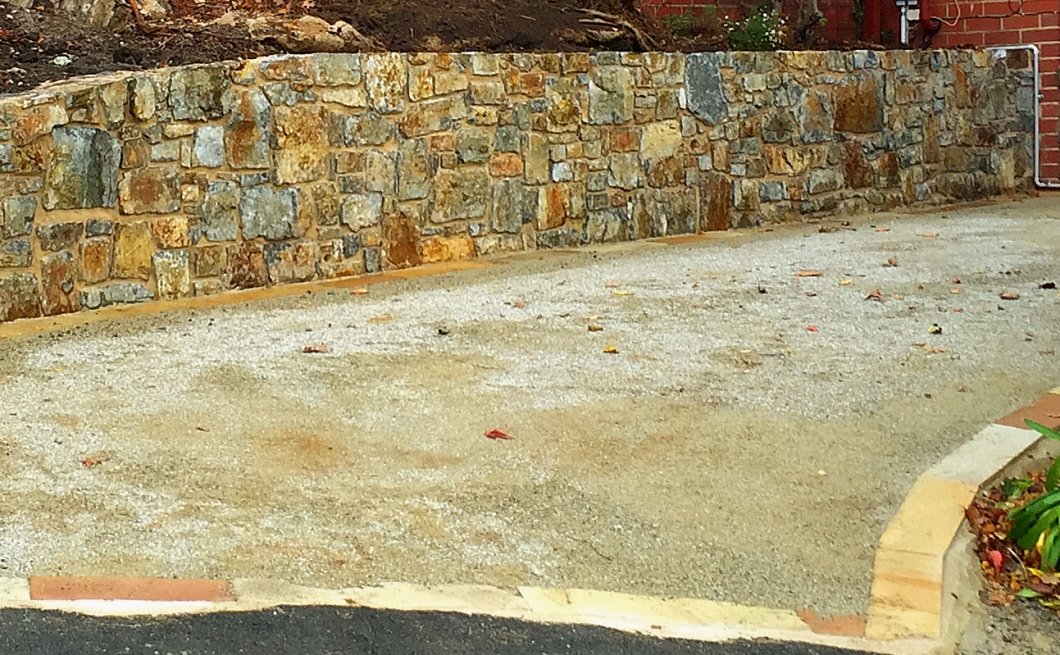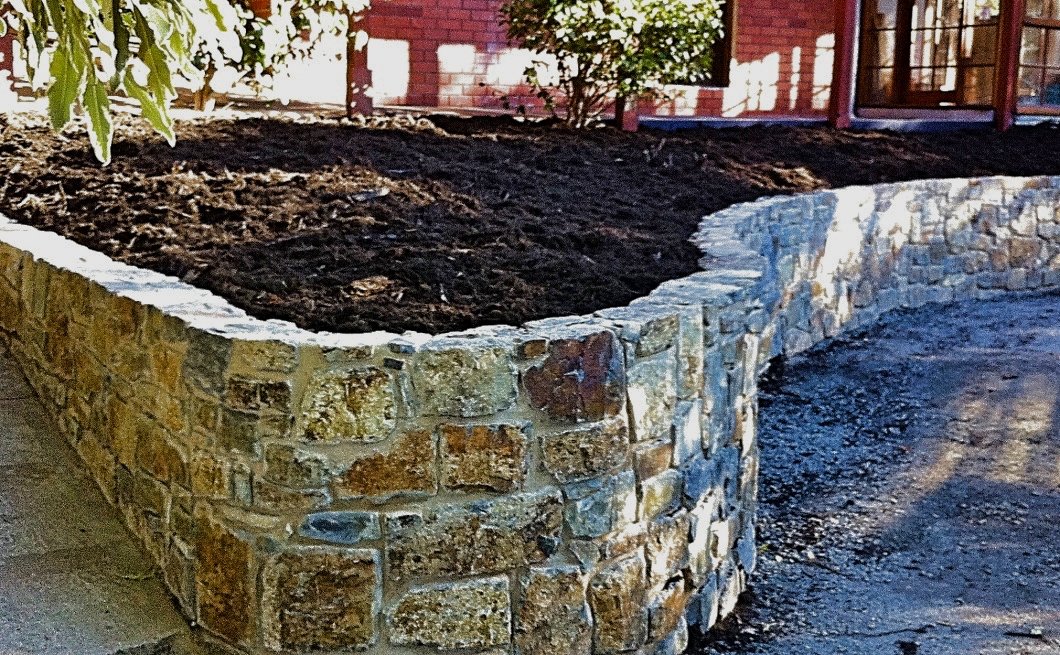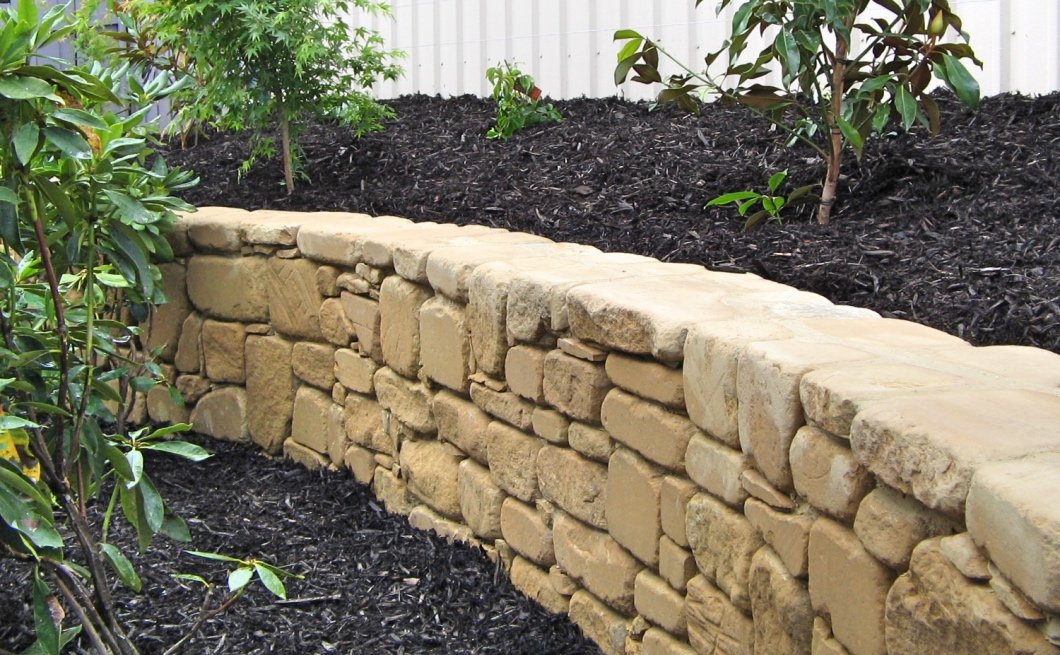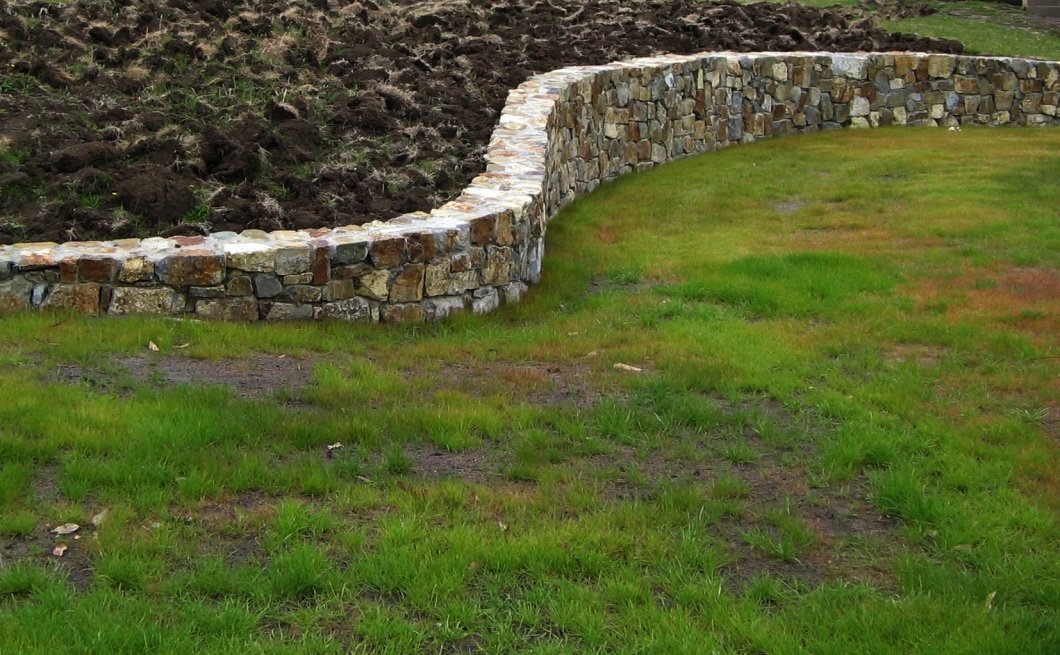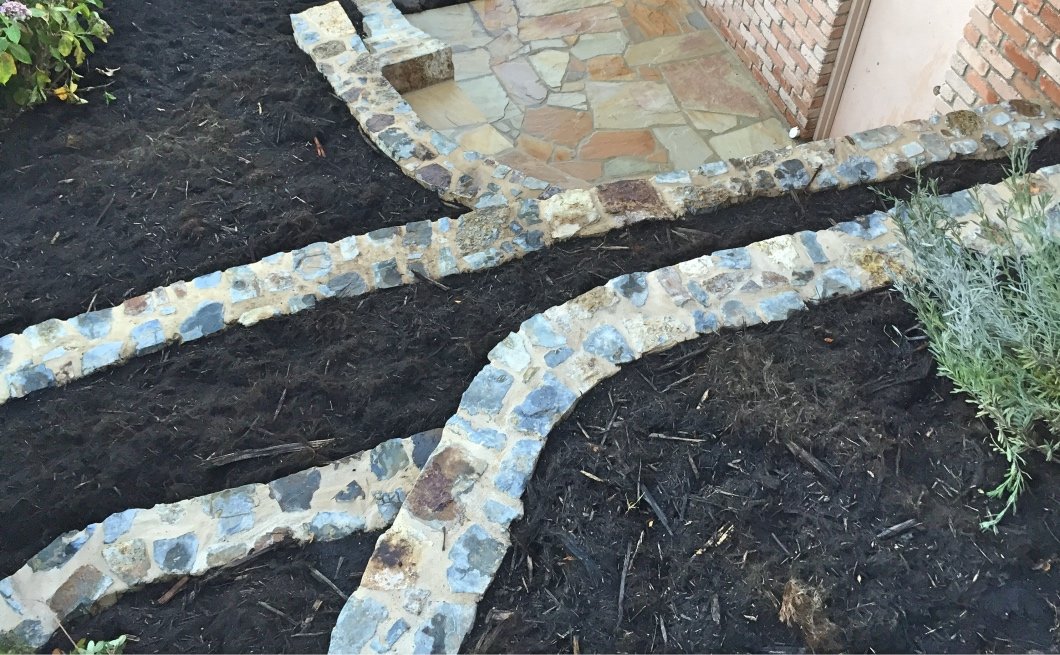Retention to detail
Tasmania is blessed with many mountains and steep slopes - a fact which always astonishes me when I fly into Hobart. A blessing and a curse from a landscaping point of view - hard work and considerable expense is required to make gardens traversable, productive and safe. But the opportunity to create beauty vertically is enviable - as anyone who has lived in a flat place can attest.
Clients often ask me "What's the cheapest type of retaining wall?" The simple answer - in terms of upfront cost - is always treated pine sleepers. You dig a few holes, concrete the posts in and screw or bolt the cheap sleepers to the posts and apart from some drainage provision behind the wall, that's it. Quick, therefore low on labour costs, the main cost in building retaining walls. However, I don't think the answer is anywhere near that simple over the long term, and we need to consider other costs than purely financial ones. Even though the pine is treated, those boards will start rotting way sooner than we are led to believe, and once you've had to rebuild a treated pine wall - it's not as cheap as it first looked. Secondly, don't get me started on the chemicals required to slow the rotting process...
Untreated hardwood sleepers are similarly inadvisable as they rot within a few years - older creosote drenched railway sleepers tend to last much longer but they are now nearly impossible to find. People used to pour old sump oil on hardwood to make it last. These approaches are banned now because carcinogenic creosote and sump oil are not only bad news for organisms that eat or decay wood...
Concrete ('Besser') blocks do a good job of being straight down the line. They are well engineered to accommodate reinforcing steel and core-filling with more concrete. In certain applications they are indispensable. Not cheap though, nor especially beautiful - although they can be rendered (with yet more cement product) and painted to soften. And concrete production has a high environmental cost - enormous heat is required to convert lime into cement, and that heat is produced by burning coal. Perhaps we should be sparing with our use of concrete products?
There are many varieties of manufactured concrete blocks on the market which rely on weight and an interlocking design so that gravity holds them in place. They are fairly inexpensive, and effectively marketed to DIYers because of their simplicity. There is a lot of concrete in them, though, and personally I'm yet to find an aesthetically pleasing concrete block.
Call me old-fashioned, but I love rock. For large areas, dolerite boulders work well, and an experienced excavator operator with some finesse can make works of art out of massive rocks. No concrete required. And dry-stone walling is also a beautiful, no-cement option which is practical for many low walls and fences. For more compact garden spaces with serious retaining needs, a solid reinforced concrete base is unavoidable, and cement in the mortar, and sometimes a steel-reinforced skin of concrete is needed behind the wall. On balance though, relatively little cement is used compared with 'Besser-blocks,' rotting is not an issue, and aesthetically the stone speaks for itself.
Gabion walls offer another no-cement alternative for stone - a more industrial aesthetic with the steel mesh holding the stone in place. Gabions have the advantage of being freely draining and rely on mass and gravity to do the work of retaining, the stone fill is relatively inexpensive and if the back side of the wall is hidden then lumps of old concrete may be usefully buried in the cage saving the high expense of carting it to a tip to uselessly bury in landfill. Of course, steel is not without its financial and environmental costs, and filling a gabion cage is a surprisingly labour-intensive process if it is to look good. So they are not especially cheap.
Glad we cleared that up.

